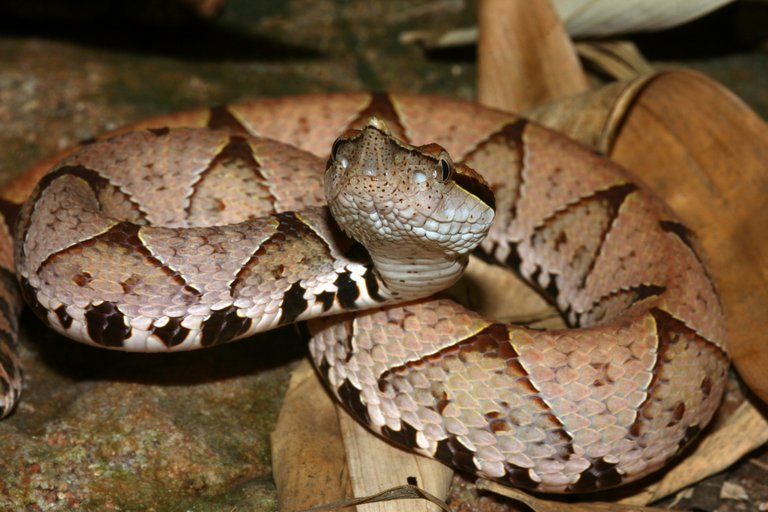Hundred-pace snake
(Deinagkistrodon acutus)

Description
Deinagkistrodon acutus is a species of snake. It was first described by Albert Günther in 1888. Deinagkistrodon acutus belongs to the genus Deinagkistrodon, and family Viperidae. Deinagkistrodon is a monotypic genus created for the venomous pit viper species, D. acutus, which is endemic to Southeast Asia. No subspecies are currently recognized. Deinagkistrodon acutus is light brown or greyish brown dorsally, with a series of dark brown lateral triangles on each side. The two pointed tops of the two opposite triangles meet each other at the mid-line, forming a series of about 20 light brown, squarish blotches on the back. A row of large black spots extends along each side near the belly. The top and upper sides of the head are uniformly black, with a black streak from the eye to the angle of the mouth. D. acutus is yellowish ventrally, spotted with dark brown. The young are much lighter than the adults with essentially the same pattern. The head is large, triangular, with an upturned snout. The body is very stout. The tail is short, ending in a compressed, pointed slightly curved cornified scale. The top of the head is covered with nine large shields. The dorsal scales are strongly and tubercularly keeled. The subcaudals are mostly in pairs, some of the anterior ones are single. This stout snake, usually between 0.8 and 1.0 metre (2.6 and 3.3 ft) in total length (including tail), reaches a maximum total length of 1.57 metres (5.2 ft) in males and 1.41 metres (4.6 ft) in females. The largest specimen on record measured approximately 1.549 metres (5.08 ft). Deinagkistrodon acutus is found in southern China (Zhejiang, Fujian, Hunan, Hubei, Guangdong), Taiwan, northern Vietnam, and possibly Laos. The type locality was not included in the original description. It was later given as "Wusueh, Hupeh Province, China" by Pratt (1892) and Pope (1935). Listed as "Mountains N. of Kiu Kiang" in the catalogue of the British Museum of Natural History. The species D. acutus inhabits high, forested mountains up to 1,350 metres (4,430 ft), but has also been found in low coastal regions (100 metres (330 ft)). It prefers lower mountain slopes or rocky hills with small valleys.
Taxonomic tree:







